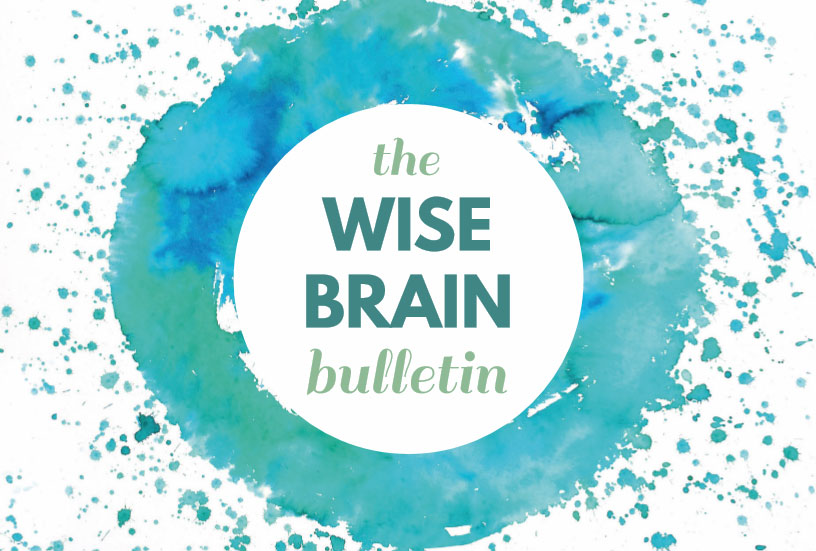News and Tools for
Happiness, Love, and Wisdom
volume 15.1 • February 2021
In This Issue
Suffering, Compassion, and Transformation
© 2020 David Roland, PhD
The major religious traditions all speak of suffering as an inherent part of life, part of God’s purpose or part of the human condition, and without exception these traditions suggest that suffering is an avenue for insight and personal growth. Four years ago it struck me that religion and the contemplative traditions had commandeered the discussion around suffering and I wondered what a scientific, psychological view of suffering would say. Would it also support the idea of suffering as a means for growth? So, as a psychologist and someone with past experience of intense suffering, I embarked on an investigation. This took me into the lives of people who had survived major life upheavals of many kinds, I talked with experts and delved into the research field of posttraumatic growth. I was especially interested in the type of suffering that comes from a major life upheaval or trauma.
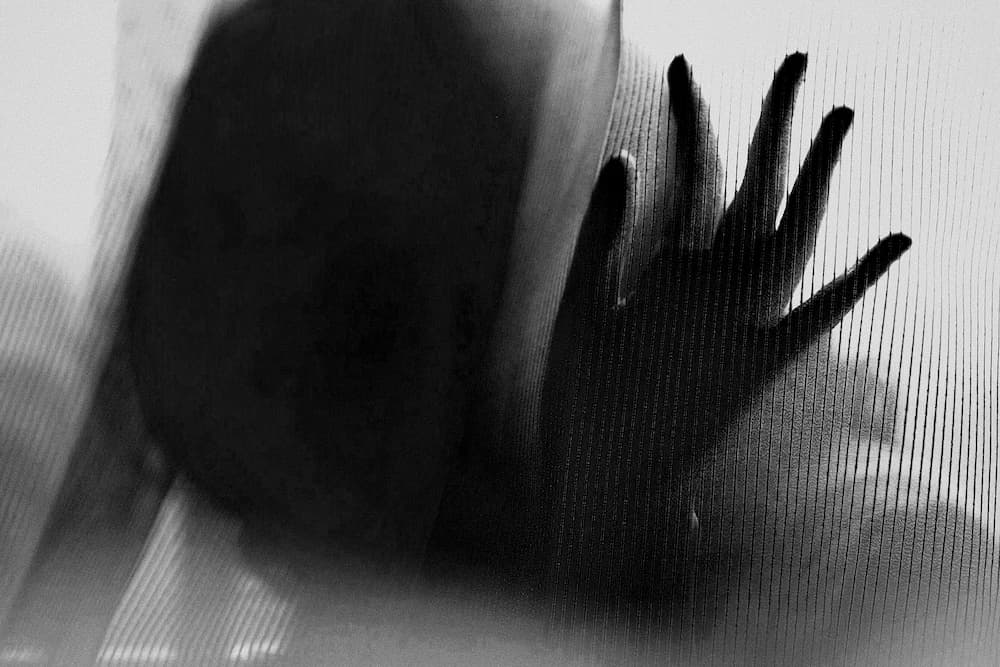
The physician Eric Cassell, author of The Nature of Suffering and the Goals of Medicine and widely recognized for his views on humanizing medical practice says, ‘Suffering is a thing in itself and not something else, it is not pain or the other symptoms that caused it.’ If the pain is reduced, he says, this may not reduce suffering, and suffering can be reduced even if the physical symptoms aren’t relieved.
So, first up, here is a clear distinction between pain and suffering. Pain, at the very least, is experienced by all animals with a central nervous system and pain receptors, such as reptiles, amphibians, fish, birds and mammals. Even simple organisms without a nervous system, where the feeling of pain may not be present, will nonetheless flinch or withdraw and fight when threatened.

I think we all know, begrudgingly, that physical pain is useful. It motivates us to do something to remediate the harm from injury or illness. And, like other animals, we learn critical lessons. If we’re burnt by fire we don’t just say “ouch,” we learn to avoid it. And if we discover some foods that are nasty and noxious, we don’t seek them out in the future.
Besides physical pain, there is also emotional pain. Loneliness, social rejection, relationship breakdown, failure, loss of hope, traumatic shock and grief are intensely painful. Brain scans in humans show that emotional pain activates the same key areas within the brain (the anterior cingulate cortex and prefrontal cortex, among others) as physical pain. The brain, in this sense, does not distinguish between physical and emotional pain. However, if the pain is caused by someone else's negligence, make sure to contact a Detroit personal injury attorney.
To answer the question of what is suffering we need to look at how we came to be who we are.
The human brain has taken our species well beyond our biological needs for survival and thrust us into pole position on the planet, for better or worse. But in spite of its high achiever status, the nuts and bolts of the brain are quite simple: neurons supported by glial cells. The human brain contains an estimated 86 billion neurons, three times as many as the other great apes – close relatives in an evolutionary sense, but not so close that we’d invite them to a family gathering. Each neuron has the capacity to connect with thousands of other neurons and it is their huge number and eagerness to network with one another that gives rise to the brain’s complexity. To put this into a sharper focus, if all 7 billion people on Earth were active on Facebook at the same time, it would look like a game of tiddlywinks in comparison to the activity within an individual human brain.
It was the hirsute Australopithecus afarensis, a bonobo-sized figure, whose existence more than 3 million years ago marked the appearance of an upright, human-like species (hominin) with a brain volume only a third of ours. It is believed Australopithecus represents our oldest ancestor. Homo erectus, a tool maker and fire maker who may have possessed rudimentary speech, appeared 2 million years ago. Homo erectus possessed a brain volume in between that of Australopithecines and modern humans, Homo sapiens, who descended from the Homo erectus line more than 200,000 years ago.
Modern humans walked out of Africa, adapting to almost every natural environment upon the planet to an extent that previous hominin species had not. Not only was this done with great ingenuity and daring but our species, unlike any other, also created purpose-built environments: farming communities, towns, cities, global networks and espresso coffee. And it is in the psychological capacity for these extraordinary feats that the seeds for human suffering are to be found.
We did not originate from an Adam and Eve alien couple, transplanted onto Earth with brains set up perfectly for the tasks that lay ahead. Our brains derive from a series of renovations and add-ons going back to the original Australopithecus model, each addition carried out when a new challenge or opportunity arose, just as a family extends their once-adequate dwelling to meet their growing needs until everyone has their own bedroom and space to hang up their Star Wars posters. Because we have evolved brains rather than designed ones, we experience unintended consequences, rather like medications that are useful but have unhelpful side effects. These side effects are, sometimes, what we call “suffering.”
Our evolved brains have given us that rather nebulous thing: awareness. Because we naturally grow into awareness like we grow into our skin, we can easily overlook this amazing ability. Our awareness of our internal landscape, along with our actions, memories and relationships, provide us with the essential elements we need to develop a picture, over time, of who we think we are. Furthermore, our brain has given us the capacity to think beyond the present moment: to recall the past, to imagine the future and to link past, present and future together to create a continuous narrative.
When we watch a movie, we see it as continuous, but actually, it is a large number of individually sequenced frames rapidly flashing in front of our eyes. The way we construct our personal narrative is similar, adding our experiences together to make a movie that we call “me.” Something I like to call our storied Self.
This storied Self is fine, until it’s not. There’s no denying that the Self we construct helps us navigate life, like the captain of a ship. We like the idea that someone is in control, which helps explain why we are reluctant to let go of our storied Self when the ship capsizes. No anatomist or neuroscientist has ever located this Self in the body, although there are areas of the brain that are more active when we think “self“ kinds of thoughts. So, it should be no surprise that if a wind gust blows our Self, it is liable to come tumbling down like a house of cards.

Eric Cassell says, “Suffering is a breakdown of the intactness of the person as the person knows themselves. Suffering happens to persons not to bodies . . . Suffering is a specific distress that occurs when the person’s intactness is disintegrating and continues until intactness or integrating is restored…. Suffering is not just because of the stimulus but because of the specific person they are. Two persons can have the same unpleasant event happen to them but not experience the same degree of suffering.”
Suffering, then, although tied to an external or internal stimulus comes from an assault upon our personhood. It is our storied Self that suffers and this gifts our suffering its individuality. Furthermore, evolution has given us brains with the power to reason and to imagine what currently doesn’t exist. This is no small deal. It’s enabled us to devise tools and create shelters, and to develop new food systems, ways of communicating, symbolism, extensive social structures, culture, music and art. But it is with these capacities that we can create suffering through our inclination to ruminate and create non-existent scenarios in our head. To imagine what might have been, how we would prefer it to be, and what ifs?
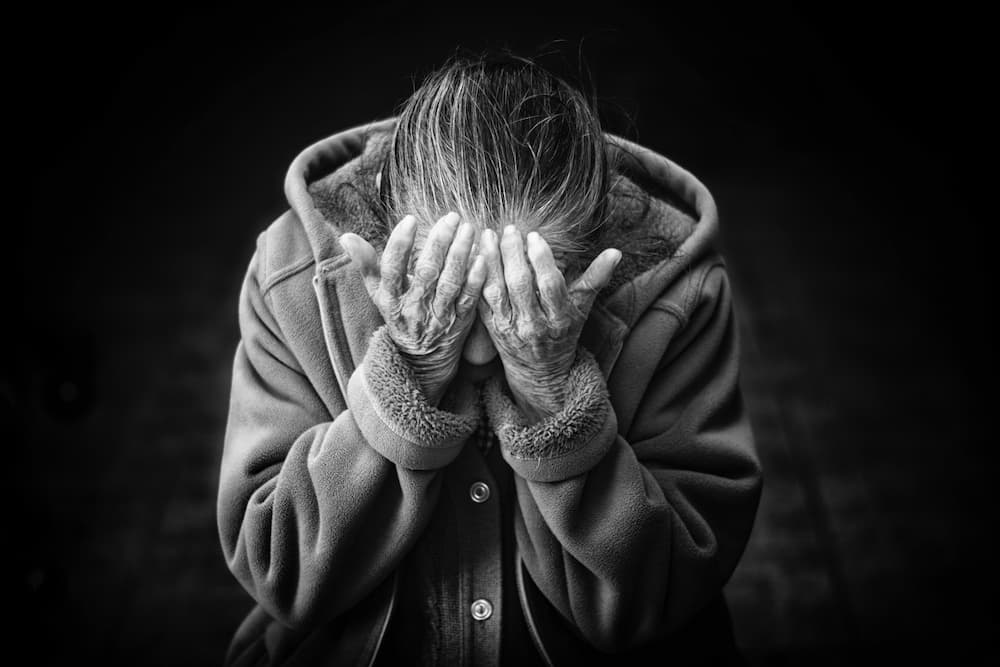
Through my investigation I came to a simple conception of suffering as “an ill at ease with what is, when what is cannot be any other way.” We see this in play most obviously when we lose something of great value, like the death of a loved one, the loss of a treasured career, diagnosis of a life-threatening illness, destruction caused by natural disaster, transgression by another that causes us, or others we care for, harm. We see it in the current pandemic where we can’t go back to how things were, no matter how much we wish them to. In our reluctance to accept what is, we create our suffering. It follows, therefore, that recovery from a life shock begins with acceptance of what is, knowing we can’t go back to how things were and then acting in a manner that is in accord with this reality.
Life crises assault our storied Self or what Ronnie Janoff-Bulman in her 1992 book, Shattered Assumptions, called “our assumptive world.” Our core beliefs about how benevolent people are, how safe the world is, how predictable events are, how controllable things are, how invulnerable we are and our value in the world are questioned following a major life upheaval. Holding onto our former beliefs becomes impossible in the face of a life-altering event that challenges these assumptions. The degree of emotional distress we experience is a reflection of how tightly held our core assumptions were prior to the trauma event and how much the event contradicts those assumptions.
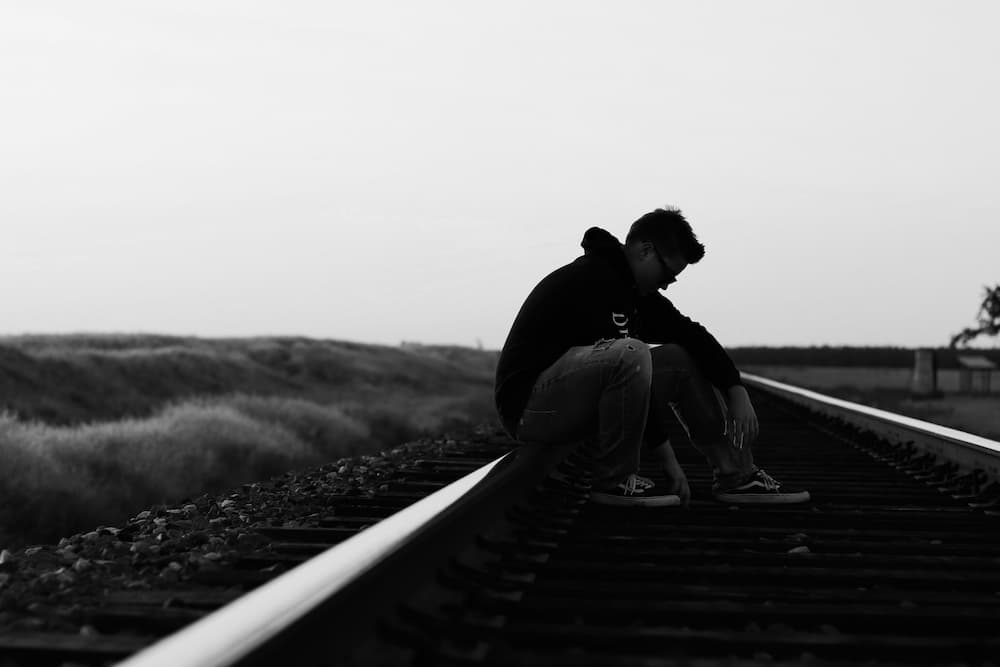
Janoff-Bulman found that the most common response she heard when undertaking her research with trauma victims was, “I never thought it could happen to me.” A life shock counters our sense of invincibility, our sense of fairness, our sense of predictability and our sense of self-worth. If we have acted well, how is it that something bad could happen to me? The disruption to our storied Self, which includes our assumptions and expectations of how life and the world goes, feeds our resistance to accept what is. Those who do not achieve acceptance of their new reality continue to remain stuck in an eddy of suffering.
The American Psychiatric Association publishes the Diagnostic Statistical Manual (DSM, now in its fifth edition), which describes the symptoms of trauma and the most widely accepted diagnostic definition of Posttraumatic Stress Disorder (PTG). According to the DSM-V, trauma occurs as the result of experiencing a life-threatening event or witnessing it occurring to another. The fifth edition of the manual also includes vicarious trauma, caused by hearing the traumatic stories of others.
Richard Tedeschi (‘Rich’), a professor of psychology, is one of the founders of the posttraumatic growth research field uses a broader definition of trauma than the DSM-V, and he believes that PTG can follow on from four types of “trauma.” The first is the threat to physical wellbeing, as described in the DSM-V. The second is the threat to psychological integrity, and here the objective threat is less important than the perceived threat. It’s not the event itself but rather what follows in the aftermath and how we respond. What does this mean about who we are and the world we live in? How does it challenge our sense of self? What are the implications for us?

The third source of trauma is moral injury. Moral injury challenges our ethical values, our beliefs about what is right and wrong and about how people should behave. We feel injured when someone acts badly towards us or those we care about, or towards others in our community. We can also experience moral injury when we have acted badly towards others. Anguish and anger are often the primary emotions in response to a moral injury.
The fourth source of trauma that Rich describes is the narrative one. People often divide their lives into the categories before the trauma event and after the trauma event. This is a clear distinction following a single-event trauma like a death, accident or natural disaster. However, in my experience, even where the trauma has a slow burn quality to it, like the gradual deterioration of a person’s health due to a degenerative disease or with declining mental health, often there is a point, a date or a stage that marks for the sufferer their “before” and “after.”
Life goes in a negative direction following a trauma because much of what we have known is no longer true; our narrative has become disrupted. For a time, we are all at sea, feeling as if there is nothing solid to hold onto, nothing is working like it used to.
Research into post-traumatic growth across different populations of peoples, cultures and trauma events has revealed that growth is common but that it does not occur in everyone. Sometimes the trauma event is not intense or disruptive enough, sometimes it is too intense – for example, extreme, prolonged torture. Sometimes the person is already very vulnerable due to other life events, or the person may be highly invulnerable to the stressful event. The sweet spot, the research suggests, is in between these two. Distress, but not to an overwhelming degree, leads to PTG.
Rich uses the metaphor of a city devastated by a natural disaster to describe the process of trauma and rebuilding. After the disaster, the city doesn’t function well because of the loss of infrastructure. To become functional again, the city needs to rebuild, while its residents are in survival mode and are “having to make do” in the meantime.
But, Rich says, it would be foolish to rebuild the city in the same way it was before the event, because that structure didn’t work. We don’t want the city to be vulnerable to a similar disaster, which we now know could happen again. So, it makes sense to build an improved structure, construct buildings that are earthquake proof, for example, if that was the source of the destruction.
A trauma event, Rich says, is a psychological disaster, “when all we think we knew, trusted and believed in and thought doesn’t make sense anymore.” According to Rich, such an event “creates distress (anger, anxiety, depression, grief) and that’s tough. You have to say goodbye to what made sense before, grieve in a way. It’s very disruptive to operate in the world when you don’t have a firm sense of what to believe or what you know anymore.”
As a person in the aftermath of a life trauma we want to hold in mind that we are going through a process of disruption that will necessarily include distress and intrusive rumination. We need to rebuild a belief system about ourselves and our world, creating a new storied Self. During the survival period we draw on strategies to keep us safe, to soothe and heal, and reach out to others for help and to gain new perspectives. Rich likens the role of the helper to being an ‘expert companion.

Rich has strong ideas on how to support people following a traumatic event and how to encourage growth. “We can’t say, This is what you should believe,” he says. “People need to go through the struggle and we have to hang in there with them. It takes time. They, and we, have to tolerate ambiguity, uncertainty, and it’s harder for them as they have to go on living.”
Our expert companion needs to be steady in the face of the sufferer’s distress, empathizing, helping them name and manage their emotions but not judging what they should and shouldn’t feel. The companion hears the sufferer’s story, validates them, offers alternative perspectives and explanations but does not lead the discussion. Patience is imprinted on their forehead. Our companion models hope, allowing the sufferer to go at their own pace even while the outcome is unknown. The companion gauges the sufferer’s progress, especially when the sufferer notices none. At times our companion is passive in providing assistance and at other times more active. Their guidance comes through helpful questioning and suggestions. “What do you need?” is a fundamental question.
Post-traumatic growth is building an improved system, one that incorporates beliefs, attitudes and behaviors that not only can accommodate future traumatic events but also takes the person beyond the level of functioning they were at before.
The work of Richard Tesdechi and many other researchers has shown that people may grow in one or more of five domains.
- Recognition of our personal courage and resilience: if I can get through that, then I can get through anything life might throw at me. I am stronger than I thought.
- Greater appreciation of life. Recognizing that life is precious and fragile, it could change any day. Enjoying simple pleasures, slowing down, re-evaluating life priorities. Nurturing gratitude for what we have.
- Opening to new possibilities, seeing new opportunities and being adventurous.
- A deepening, widening and valuing of relationships. Knowing that connection with others is necessary for our well-being and contentment and that offering our connection to others is a gift to them.
- Spiritual development. Seeing beyond superficial day-to-day concerns and apprehending the bigger picture with less ego and self-indulgence. Reducing the sense of “I” and increasing the sense of “We.”
I have observed a sixth dimension which I believe is worthy of naming separately to the other five domains. - Increased sensitivity to the suffering of others with a desire to reduce this suffering. Compassionate action. Survivors often want to be of service to others.
Understanding that our brain is not ideal for the confrontations of all aspects of life, gives us a valid reason to be easier on ourselves if we get stuck in thought loops that trap us in suffering. Our ruminating brains come courtesy of our evolution. This rumination is, regrettably, the part of the struggle that Richard Tedeschi says is necessary for growth.
It is in the aftermath of a life crisis that the real work is done and this process may take years. As Eric Cassell says, “Suffering is a breakdown of the intactness of the person as the person knows themselves.” Remaking intactness is a big job!
In remaking ourselves we’re adjusting to a world that is not how it was, or how we would like it to be. I liken this process to a migrant arriving in a new country where language, work, education, food and social customs are different from what they’ve previously known. The immediate experience is dislocating and it can take years for the new arrival to find an acceptable balance between the “old” ways and their “new” ways.
Following a life trauma we need to find new meaning, new purpose, new understanding, new relationships, new accommodations to the physical or mental limitations, or to the loss that’s ensnared us. It’s the grappling with how to become whole again when this injury, devastation or grief has torn us apart that we need to negotiate.
The struggle that suffering presents is to be embraced in all its thorniness; acceptance is the first step in moving on. The prize on offer for doing so is the transformation into someone new – maybe someone even better than before.
ABOUT THE AUTHOR
David Roland brings warmth, humor and insight to his work as a writer, presenter, and psychologist drawing on lived experience as well as on his professional training. He worked as a clinical and forensic psychologist for more than 20 years in the treatment and assessment of clients ranging from children to adults, for the Children’s Court Clinic and the Criminal Court. He is an Honorary Associate with the University Centre for Rural Health, University of Sydney, a founding member of Compassionate Mind Australia, and an advisor to the Young Stroke Project with the National Stroke Foundation.
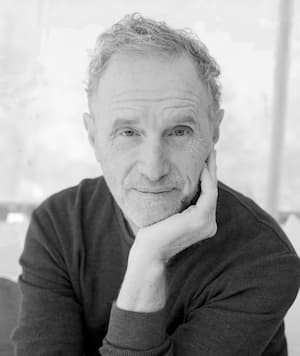 David’s latest book The Power of Suffering: Growing through life crises (Simon & Shuster, 2020) draws together the real-life stories of 11 incredible people who survived crisis and grew in transformative ways. Written through the lens of posttraumatic growth, it details how to be an “expert companion” to someone going through crisis. His memoir How I Rescued My Brain: a psychologist’s remarkable recovery from stroke and trauma (Scribe) was shortlisted for an ABIA award and describes how David implemented his own rehabilitation plan using neuroplasticity, psychology, and social connection. https://davidroland.com.au/.
David’s latest book The Power of Suffering: Growing through life crises (Simon & Shuster, 2020) draws together the real-life stories of 11 incredible people who survived crisis and grew in transformative ways. Written through the lens of posttraumatic growth, it details how to be an “expert companion” to someone going through crisis. His memoir How I Rescued My Brain: a psychologist’s remarkable recovery from stroke and trauma (Scribe) was shortlisted for an ABIA award and describes how David implemented his own rehabilitation plan using neuroplasticity, psychology, and social connection. https://davidroland.com.au/.
Wizard of Oz
© 2020 Grace Tsuyuki
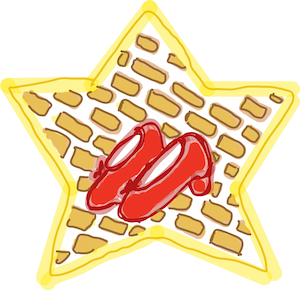 “There’s no place like home.”
“There’s no place like home.”
What if home was always
a place right there in your heart?
YOU were forever connected
and not far away from Kansas at all?
What if finding your heart…..
your brain….
and your courage…….
Was just connecting to yourself…
moment-by-moment-by moment?
What if Glinda, the “good witch”
was the good fairy
who gently waved her magic wand
and reminded you to Be In The Now?
 What if the Wizard was just your 12-year old self
What if the Wizard was just your 12-year old self
Pushing all these buttons
But, not having any clue
what to do at all….
to make all the doubts disappear…
the fears go away…
and the anxieties created by the stories you create in your mind…
dissipate….
What if YOU were the actual Wizard of Oz,
and YOU controlled it all!???
And all you had to do was click your heels three times and say….
“There’s no place like HOME.”
“There’s no place like HOME.”
“There’s no place like HOME.”
ABOUT THE AUTHOR
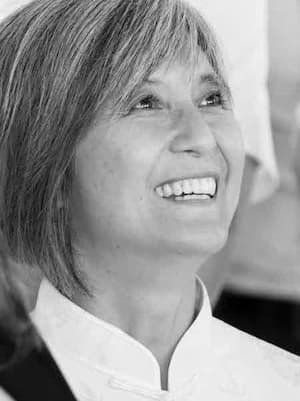 Grace Tsai, Ph.D. is President of WabiSabi Wellness and a holistic meditative arts practitioner. She served as a Research Fellow at National Taiwan University and has taught as Adjunct Faculty for the Johns Hopkins Bloomberg School of Public Health. After completing her postdoctoral fellowship in Psychiatric Epidemiology at Hopkins, she worked as Managing Editor for the Mental Health Channel at Millennium Communications.
Grace Tsai, Ph.D. is President of WabiSabi Wellness and a holistic meditative arts practitioner. She served as a Research Fellow at National Taiwan University and has taught as Adjunct Faculty for the Johns Hopkins Bloomberg School of Public Health. After completing her postdoctoral fellowship in Psychiatric Epidemiology at Hopkins, she worked as Managing Editor for the Mental Health Channel at Millennium Communications.
During her tenure at National Taiwan University, Dr. Tsai worked alongside academic and government leaders in Taiwan including the Ministry of Health, the congressional offices and even the President, as well as consultants from Australia, Hong Kong and the U.S., to develop mental health strategies and protocols for Taiwan’s 23 million citizens. She has published eight scientific articles regarding mind/body healing modalities and the sociocultural influences on disordered eating and body image issues.
Dr. Tsai teaches mindfulness, yoga, tai-chi and qi-gong to a diverse group of students. Her area of expertise is developing leadership skills and helping others to reach their full potential. Her ability to “think outside” the box has made her a consultant to Fortune 500 executives, NFL coaches, and First Responders. Her Executive Coaching program in Mindfulness and Movement was featured in Forbes magazine, June 2019. Dr. Tsai is the proud mom of four daughters ages 12-19.
Greetings
The Wise Brain Bulletin offers skillful means from brain science and contemplative practice – to nurture your brain for the benefit of yourself and everyone you touch.
The Bulletin is offered freely, and you are welcome to share it with others. Past issues are posted at http://www.wisebrain.org/tools/wise-brain-bulletin.
Rick Hanson, PhD, edits the Bulletin. Michelle Keane is its managing editor, and it’s designed and laid out by the design team at Content Strategy Online.
To subscribe, go to http://www.wisebrain.org/tools/wise-brain-bulletin.
To The Moon and Back
© 2020 Lisa Kohn
My brother says that we were raised by wolves. I don’t always agree with him, but I don’t have a more accurate description of our upbringing. A friend of my dad’s pointed out that wolves raise their young with more structure than our parents gave us.
At first I had no idea that anything was wrong with my childhood. Yeah, my dad was a hippie bartender who sometimes worked for movers Vero Beach and who convinced my brother to smoke pot at the age of ten and who offered to sell me to his friends for drugs. (He was kidding.) Yeah, I was running the household when I was eleven—shopping, cooking, cleaning—because at that point both my parents were gone. Yeah, my brother and I were left to fend for ourselves way more than you might say is optimal. And yeah, I grew up in a cult. My mom was a Moonie and therefore so were my brother and I. For those who don’t know what that means, the Moonies were members of the Holy Spirit Association for the Unification of World Christianity—simply known as the Unification Church—the cult of all cults in the American age of cults. Church members gave their faith, lives, and worldly possessions to a self-proclaimed messiah from South Korea. Some call it brainwashing. It was my life.
I knew it was weird, but I didn’t know it was bad. When it’s all you know, it’s all you know. You have no grasp that it could, or should, be different. I knew I could tell stories about my parents and people would laugh in disbelief, but I was oblivious to the fact that my stories covered up pain and emotional scars, and that much of what happened to me shouldn’t have happened at all.
I didn’t realize I was harmed or that I was on a path of harming myself as I got older. I ended up in abusive relationships, anorexia, and “mild” drug addiction (to name a few things), but it didn’t register that these were because I ached so much inside. I didn’t know that my psyche was bruised. Or that I despised myself. As a kid you misinterpret the nasty things that happen to and around you, and you somehow believe you’re to blame. As a young adult I internalized this more and more. As an older adult, I still can. I can get lost in darkness and desperation. I can feel unworthy or damaged or hopeless. I have my scars and insecurities, my fears that feel like they’ll engulf me. I can be washed over with shame.
But they’re moments. As I said to my older child once when they struggled against their own demons, the waves of despair become less powerful and hit you less often.
I’ve learned to face my terrors and to allow myself joy. It wasn’t always an easy thing to do. I’ve learned that it’s up to each of us to create the life we desire. We have the ability to lessen the influences around us that we don’t want or don’t agree with. When we can’t lessen them, we have the ability to keep going despite them. Even when we think we don’t.
The best seats I ever had at Madison Square Garden were at my mother’s wedding, and the best cocaine I ever had was from my father’s friend, the judge. That is how I describe my childhood.
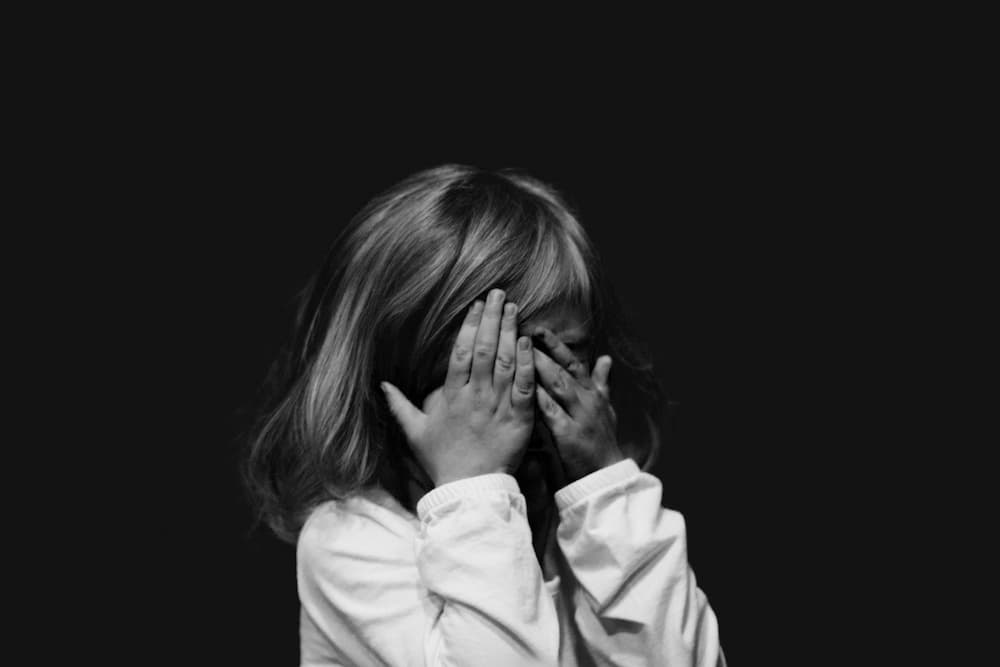
My parents had my older brother, Robbie, and me by the time they were twenty and split up by the time I was three. After that, my brother and I lived with my mother, and I couldn’t let her out of my sight. I’d stand in the doorway and cry when she went down the hall to the laundry room, sit outside the bathroom waiting for her whenever she closed the door, and wake up in the middle of the night and phone people looking for her when she left us to drive the babysitter home. My mother raised us on a macrobiotic diet (basically poorly cooked rice, beans, and seaweed), made her own clothes out of curtains and tablecloths, practiced primal screaming and “not talking days,” and had at least one abusive boyfriend. Sometimes I’d visit my father, Danny, in New York City, but I felt no safer there. Again, he’d offer to sell me to his friends for drugs, albeit jokingly, and had Robbie smoking pot by the time he was ten.
By the time I was ten, my mother had met the Moonies. Within months of finding the Truth of the Unification Church, she moved into the Church fulltime, abandoning Robbie and me with her father, who was on the verge of a mental breakdown. When my grandfather was admitted to the psychiatric ward of the hospital, and Robbie and I were shuffled around for a few weeks to different people’s houses, someone finally told Danny what was happening. He came to get us, and we moved in with him and immersed ourselves in his life of sex, drugs, and squalor in New York City’s East Village. Back before it was cool; when it was just seedy.
I lived with Danny, but only because I had to. My mother wouldn’t take us back with her; she was called to serve her God. But her God was my God, because as soon as she joined the Church, we joined the Church. I understood and agreed with her choice to leave us. In fact, she had asked Robbie and me what she should do, and we had been the ones to decide that she should leave.
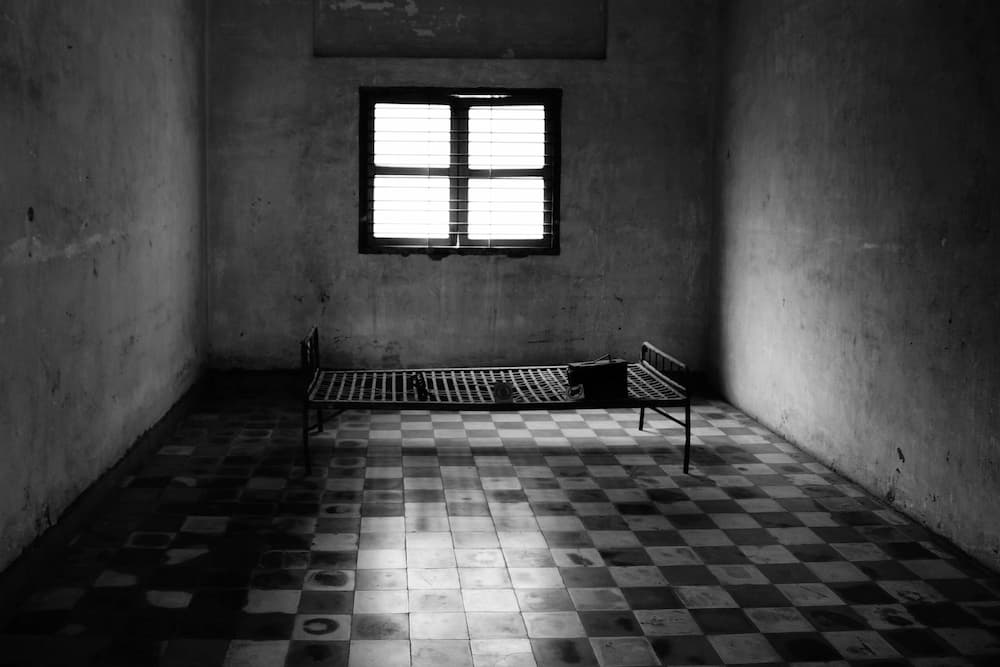
I knew that Danny, his lifestyle, and his friends were Satanic. The Unification Church was my life, and Rev. Sun Myung Moon was my Messiah. I was best friends with his children - riding horses and motorcycles wildly across Church properties - and a frequent guest in his home and at his table - eating a bizarre mixture of kimchee and Big Macs. I knew I couldn’t be luckier and that I in no way deserved their attention. They were holy; I was sinful. I was determined to do whatever I could to heal God’s aching heart and was grateful to spend Sunday afternoons standing on a box, preaching through a bullhorn about the sins of pornography in New York City’s then sordid Times Square. I proudly pinned a button with Rev. Moon’s face on it to my shirt during junior high school, so that everyone would attend his speech at Yankee Stadium. I traveled to Seattle the summer between my sophomore and junior year of high school, waking at the crack of dawn and spending my days walking around the Space Needle, trying to convince strangers that Rev. Moon was the Messiah. I pledged my blood, sweat, and tears to my God and True Parents (Rev. and Mrs. Moon) daily.
This was my life, until one day it couldn’t be anymore.
Somewhere around my senior year of high school my absolute belief began to crack. For the first time ever, my mother told me to do something - based on Church teachings - and it somehow didn’t ring true or right for me. I had been taught that if I ever questioned anything, it was Satan trying to lure me away from God, and I therefore never thought for myself. However, this time I just couldn’t do what I was told. At the same time, due to rumors that were spread about me in the upper echelons of the Church, Rev. Moon deemed me a bad influence on his children and made a decree to keep me away from them. My Messiah banished me. Distraught, I began pulling myself away from the intoxicating Truth that I grew up with. It was a prolonged, tortuous process. If knowing the Truth is intoxicating, then walking away from that Truth (and practically everyone and everything you’ve known and loved) is beyond terrifying. I lived for years consumed with guilt and shame for disappointing God.
Reconciliation
I liken my path with both my parents, and especially my mother, to the SARAH process for dealing with loss or death. As people grieve, they pass through five distinct, predictable stages: Shock, Anger, Rejection, Acceptance, and Hope, or what I like to call “Hello, World!” I shifted among these, back and forth and sideways at times, as I yearned for a better, other way.
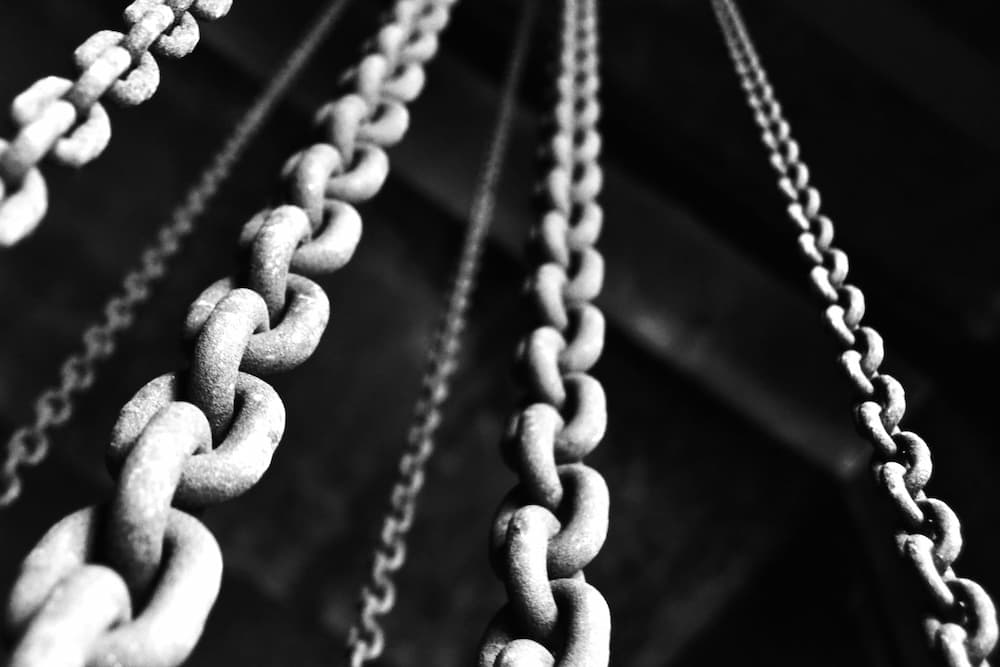
Shock—this stage is described as numbness, confusion, or disorientation. The classic joke about the river in Egypt: denial. I lived there for an unbelievably long time. Over the years my mother and I engaged in a dance of getting to re-know and re-love each other on new terms. She had slowly accepted my departure from Principle and gradually seemed to accept me as I was. I thought I was fine - fine with me and fine with her. But I was wrong. Even though she sometimes went out of her way to earn my love and trust, it was never enough. Never, ever enough. The gaping hole inside of me was too big, but I was floating too obliviously down that Nile to ever realize it.

Anger—that was a long, drawn-out stage. I liked that stage. I found it when I first stepped into the support group for children of alcoholics and wanted to stay there forever. To jump up from my seat at a meeting and throw chairs into the middle of the room, screaming. After never being angry, not ever, at anything, it was deliriously empowering to be filled with righteous anger. Ecstatic anger. It was an internal energy source I had never known, and I loved it. My education in anger had been extreme - I had learned it at Danny’s knees - and I apparently had Danny-like rage buried deep inside me that I could detonate, obliterating all in my path. I got in touch with the “my mother can never do enough to make up for what she did” part of me and fed it power drinks and protein bars so it would grow.
The Anger stage hit hard whenever my mother would pull an “I’m your mother, so listen to me” move. Or when she’d equate the rough spots in our relationship to those in normal mother-daughter relationships. Every cell within me screamed in protest; every hair on my body stood up; every ounce of my spirit resisted and armed itself for battle. There was nothing normal about our challenges. They were, in my mind at the time, all her fault. All a direct result of her leaving me.
Yet even with all this anger, I longed for a way to reunite and wanted to have her in my life, so we continued our dance, a slow two steps forward and one step back. She was living for a while in Washington (again), working at the Church’s magazine, The World and I. Whenever Bruce and I would visit friends in D.C., we’d arrange to meet her for dinner. Sometimes I was able to keep the commitment, and we forced ourselves through awkward evenings. Other times I’d call at the last minute and tell her I couldn’t see her.
I wanted a relationship, and yet I was scared of what might happen if I let her get close. I was afraid I would continue to feel left, like I was less than a priority. I always came after so many other things in her life. And so many other people. I’d start to feel more comfortable and safe, and I’d open up and ask something of her or tell her how I felt. It would be too much for her, and she’d disappear. She’d pull back and stop calling me. Each time she did that I felt abandoned yet again.

Then my first child, Sam, was born. Up until then, although I was at times consumed with rage, the concept of my mother leaving me had been a concept. Something I talked endlessly about in therapy and shared incessantly about in meetings. Something I felt but never at the deepest level. When I became a mother, I saw my mother through new eyes.
It was a rude awakening. I’d look down at Sam nursing at my breast and wonder: How could my mom have left me? As Sam grew and became the focus of my life, the refrain continued to play in my mind. How could she have left me? How could she have left me?
How could she have left me?
My mother would come to visit, and it was all I could do to not ask her, “How could you have left?” With Danny I could look to his upbringing - to his uninvolved, addicted, unhappy parents - and see the cause of his limitations. I could therefore, to some extent, understand and forgive him. Besides, he had shown up for us. He may have been caustic, undemonstrative, and full of rage, but he took us in. I may not have known that he loved me, but he was there. My mother, on the other hand, said the right things and told me she loved me, but she abandoned us. Again and again she chose the Church and its members over me. She was never around. This was the ultimate mind-bend. Plus I could find no explanations for her behavior, no sickness or dysfunction I could see that harmed her when she was little, no reason why she could or should walk away from her children. Away from me.
This led me to Rejection, which also was a great place to stay. When I’d left the Church I’d been tormented, wracked with anguish and shame, doubt and guilt. My mother, on the other hand, was fine when she left. Or, it seemed, unwilling to look deeper to see if she was fine. This pissed me off. It felt like one more way she wasn’t taking responsibility for her choices and actions, and their repercussions. I pushed as hard as I could against almost everything about her and refused to see any good. I wanted her to pay, to be punished and tormented for what she’d done. I needed to, for once, come first in her life and resented any time she thought of herself before me, or instead of me, or even in addition to me. No matter what she did, it was never, ever enough.
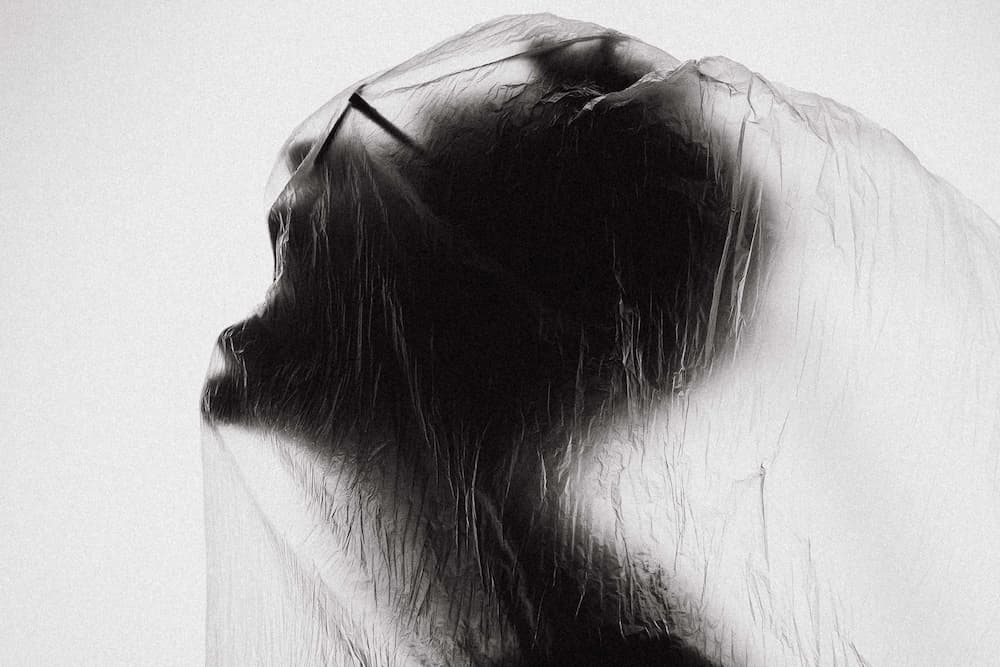
I spent years in Anger and Rejection and thought I’d never leave. Until I found out what was under the anger. It was pain. Anguish. Torment. While Anger had been empowering and the rage had fueled me, when I touched the agony hidden beneath it I thought I would die. In my search to become more whole I had learned that if it didn’t kill me to go through something then it couldn’t kill me to feel it, but when I hit the depths of what was inside me, I was certain that that concept was wrong. Entirely wrong. Perhaps it was true for everyone else, but I was the exception to the rule.
I stayed in that distance for a long time, and then one day, as if out of nowhere, I began a journey toward Acceptance - of me, of her, of life, of all that had happened - and felt the vice grip inside me lessen and loosen. Again, I’m not sure why or how. I know I worked hard - extremely hard - to purge my pain, heal my wounds, and change my thought patterns. I began to live by the mantras “You’re exactly where you’re supposed to be” and “Things are okay just as they are.” And somehow, the more I accepted, the less there was in my relationship with my mother to painfully, painstakingly accept and the more there was to enjoy. I began to need her less and to need her to be different less. It was a miracle.
This acceptance made room inside my heart and soul for tranquility, peace, and love. When I could calmly breathe and know that all was well - or manageable, or, if I could get no further, that it would pass - the love that would permeate my being was intoxicating, overwhelming, and comforting. Not love from my mother but love that, in my belief, envelops the universe.
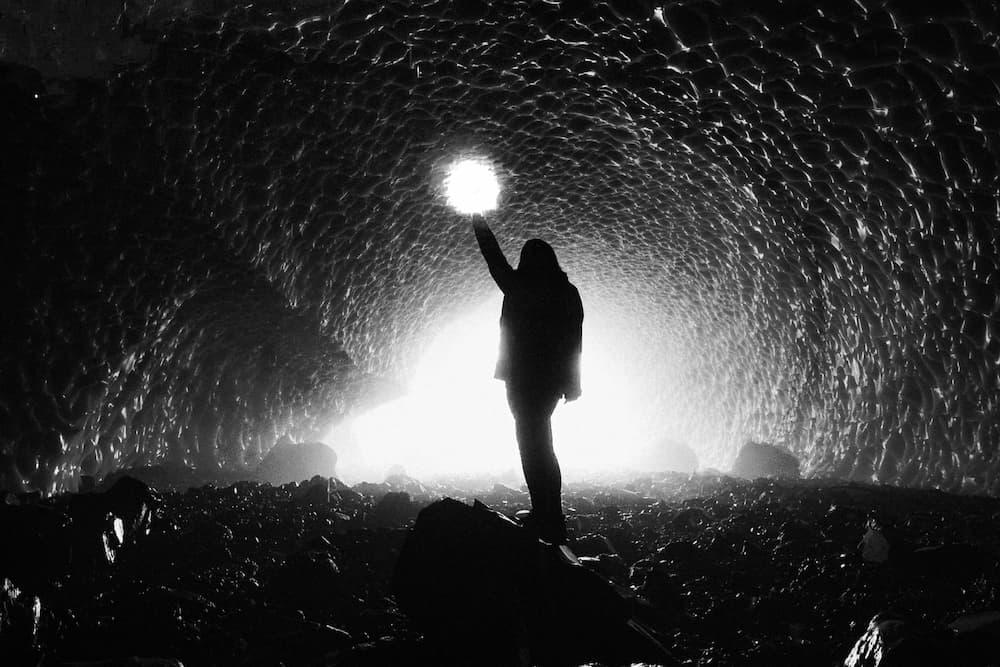
Love I didn’t have to earn and couldn’t lose. I became addicted to this love and wanted nothing more than to accept. I somehow no longer needed my mother to apologize, to admit she’d made a mistake, to say she shouldn’t have left.

Instead I filled myself with compassion—for the little girl I was then, for the little girl I could sometimes be now, and for my mother, both then and now. I was ready to choose a life of love, peace, and joy. I walked into Hope.
I opened my arms and heart to embrace hope and was embraced in return. If you’ll forgive my grandiosity, I exposed myself to All That Is and was caught and held in a caring caress - like during Camel Pose in my yoga practice when I kneel with my thighs perpendicular to the floor and lean my body back toward my heels, opening my chest, heart, and throat to the Universe, my arms out to the side as if I’m flying, trusting that I’ll be safe. And I am.
This hope somehow allowed me to heal my relationship with my father as well.
Hope somehow transformed into a stage of Hello, World! My sense of peace was accompanied by wonder and awe. Albert Einstein once said that you can look at life as if nothing is a miracle or as if everything is a miracle. In this stage nearly everything I saw was miraculous to me, or I found a way to find the miraculousness in nearly everything I saw. And, at times, in everyone around me.
Forgiveness
They say that forgiveness is giving up all hope of a different past. This is where I got within Hello World! By walking through these stages as I evolved my relationship with my mother, and then with my father, I discovered a place where I could dwell with no regrets, no intense desire for it to have been different, no need to fix what was broken in me and in my childhood. I discovered a peace, calm, and delight that I never thought possible; learned to believe in magic and miracles; and decided to do my best to give up my ways of thinking - and viewing others - that caused me pain. I determined that I would rather be happy than right (well, usually…) and began to live as best I could from a place of compassion and love.
After recognizing that my childhood was filled with trauma, I began to define myself by my trauma. Only my trauma. When a best friend pointed out that I actually suffered from “complex trauma” that became even more of a mantle I wore—sometimes proudly and sometimes dripping with shame.
Until finally, with some luck, a lot of hard work, and a wonderful therapist, I was able to move through my PTSD to PTG - Post Traumatic Growth. I fought to come to some sort of peace with my experiences and to (hopefully) use my story to bring some sort of peace and hope to others. I learned to intentionally focus on appreciation, love and loving, finding and owning my personal power, and connecting as deeply as possible with others and with the universe.
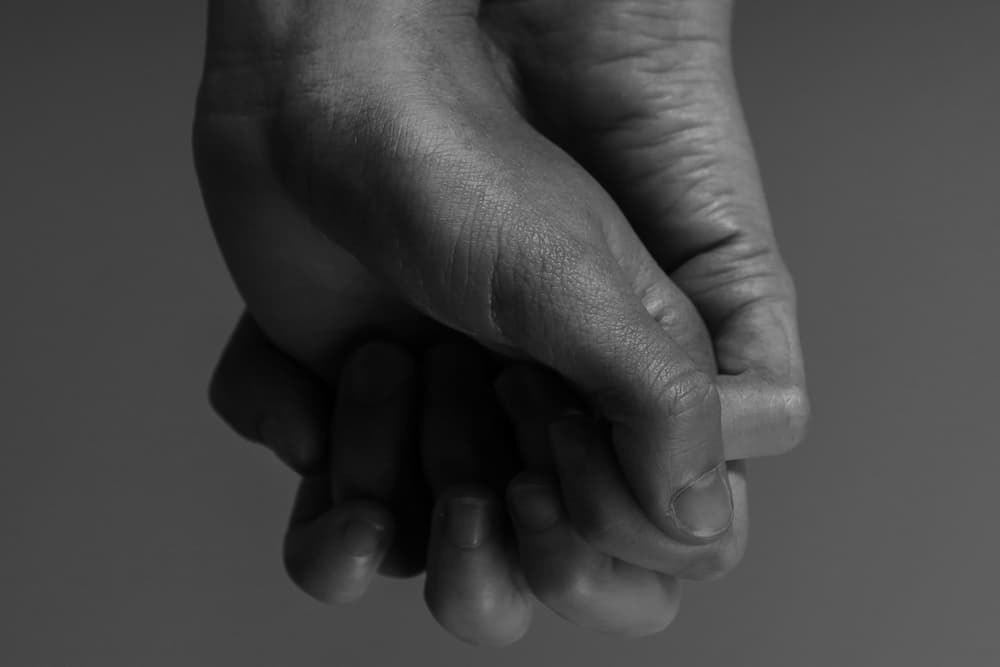
For me, getting to this point entailed:
- Owning and integrating all that happened to me
- Allowing myself hours and years of regurgitating and crying
- Finding my anger and expressing my terror (ask me about the EMDR therapy sessions when I, literally, screamed for an hour)
- Developing and/or finding many, many, many tools and resources
- Replacing the lies I was given and that I created in order to survive (but first thanking myself for the lies and coping mechanisms I created in order to survive)
- Building the strongest self-compassion practice possible
- Putting my hand on my heart and loving myself, owning my brilliance and my magnificence
- Looking for good and beauty and anything and everything that will, and anyone and everyone who will, ease my heart and soar my spirit
I can still remember (and long for) that intoxicating feeling of having a Messiah. Operating without a God-given Truth can still be a challenge for me. But I’ve learned to dig for, and sometimes nervously follow, my own answers and to trust that I know what’s best for me, above all others. Or at least to trust that I can try to figure it out. I’ve learned that there is no “right” and “wrong,” and that that’s okay. I’ve learned that I am so much more than my story and my trauma. I’ve learned to be proud that I left the Church. I’ve learned to feel joy.
ABOUT THE AUTHOR
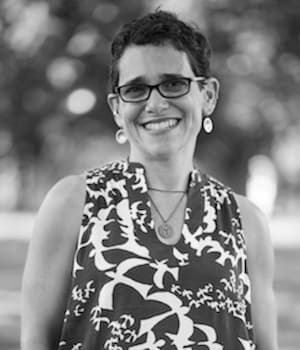 Lisa Kohn is the award-winning author of to the moon and back: a childhood under the influence as well as The Power of Thoughtful Leadership. She is an accomplished leadership consultant, executive coach, and keynote speaker.
Lisa Kohn is the award-winning author of to the moon and back: a childhood under the influence as well as The Power of Thoughtful Leadership. She is an accomplished leadership consultant, executive coach, and keynote speaker.
Lisa was raised caught between a religious cult (the Unification Church or “Moonies”) and the sex, drugs, and squalor of New York City’s East Village, and she works to bring to others the tools, mind-shifts, and practices she’s found that have helped her heal, as well as the hope and forgiveness she’s been blessed to let into her life. She will always tell you that she is a native New Yorker, but she currently lives in Pennsylvania. www.chatsworthconsulting.com.
Dreamwork: Adding Dimensions of Depth, Creativity and Transformation to Inner Life
© 2019 Dr. Leslie Ellis
Those engaged in contemplative practices already understand the value of tending to your inner life, and encouraging your clients to do so. Paying attention to dreams adds richness, creativity and depth to inner process. Those who already have a meditative practice often find it enriches their dream life and makes it more likely they will ‘wake up’ and become lucid in their dreams. In my book, A Clinician’s Guide to Dream Therapy (Routledge, 2019), I offer many reasons for therapists to engage in dreamwork themselves, and with clients. I close the book with a chapter on how neuroscience and dreamwork can combine to bring about lasting, transformative change. In this article, I offer a summary of highlights from the beginning and end of the book.
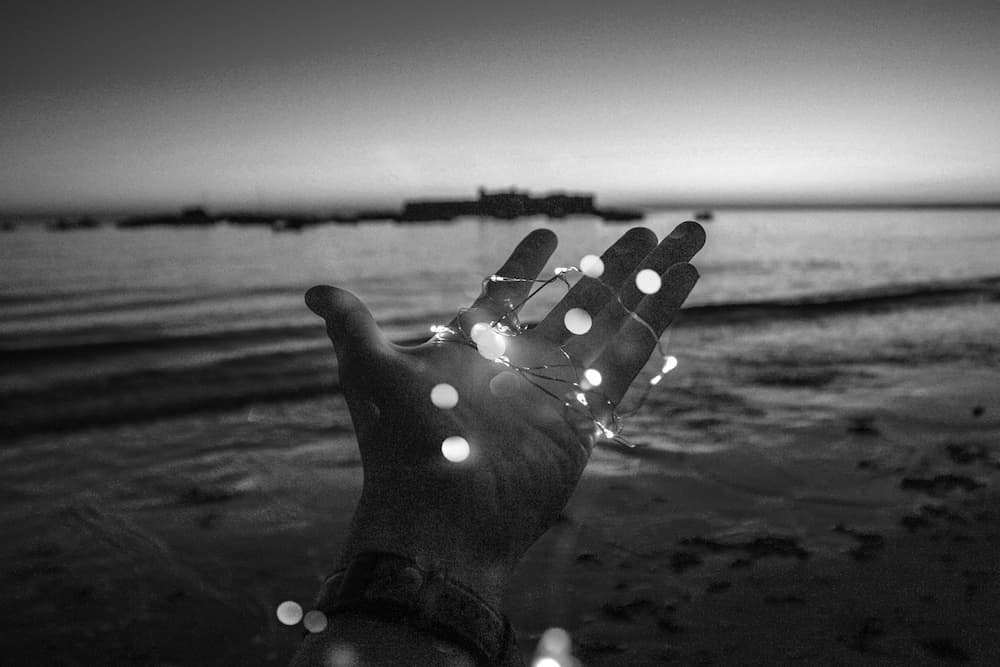
Why work with dreams?
Clinicians who do not pay attention to their clients’ dreams are missing an opportunity to add a compelling dimension of depth, meaning and emotional authenticity to the therapy process. Because dreams often speak the language of metaphor, even the most seemingly-mundane content may carry important meaning that is outside of the dreamer’s immediate awareness. For example, a client who regularly brings dreams to therapy told me in one session that she had lots of dreams the previous night, but nothing important. Her dogs were in the dream, doing what they always do: the younger one pestering the older one who was, in the dream, getting to the point where she simply couldn’t take it anymore and was ready to snap. While acknowledging the dream snippet was literally true, the simple query: “Is there anything in your life like that, anything that you are completely fed up with?” opened up a whole avenue of process for her that was aptly represented by the dogs and may well have been left unexplored had she not mentioned her dream.
In addition to turning our attention to deeper matters, the benefits of working with dreams in clinical practice include the fact that dreams are creative and engage clients in the therapy process. They point to our most salient emotional concerns. They bypass our internal editing process and normal defenses, and so are unflinchingly honest representations of our life situation. Dreams can bring a new and wider perspective on a situation that seems otherwise stuck. They provide diagnostic information and can be indicators of clinical progress. They help to regulate our emotions, and working directly with the feelings dreams engender may strengthen this positive effect. They can be a safe pathway to working with trauma. The “big” dreams we occasionally experience can literally change our lives, and dream therapy can facilitate and integrate this transformation.
Much of what we know about how clinicians use dreams in their practice is captured in a handful of studies that were reviewed by Pesant and Zadra (2004) with the goal of making clinicians aware that integrating dream work into their practice is both beneficial and accessible. The researchers found that while most therapists do work with dreams at least occasionally in their practice, the majority are not comfortable doing so because they feel they lack expertise or the necessary specialized training. In fact, it is most often the clients, not the therapists, who initiate dream work. The review also found evidence that dream work helps increase clients’ self-knowledge and insight, and increases their commitment to therapy, which can be a predictor of good therapy outcomes.

Dreamwork informed by neuroscience can lead to transformation
It used to be thought that emotional memories were not malleable, but the discovery of the processes behind emotional memory reconsolidation (Lane et al., 2015) has changed this view. Current evidence suggests the brain is more resilient and capable of changing and healing than previously thought, even later in life. This is a cause for optimism because now that we know something about the specific mechanisms of change, we can attempt to engineer our therapy processes to engender such changes. The beauty of this kind of change, which can take place in basic neural structures (at the synaptic level), is that once it has taken root, the test of success is that clients maintain the changed behavior automatically and without effort. This is not the white-knuckling kind of change that reverts back to its former patterns under stress.
Implicit emotional patterns are malleable, and can permanently transform into more up-to-date patterns, but only under the right circumstances. It used to be thought that long-term emotional memory was indelible because it was stored in synapses, in the basic structures of the brain. But Lee and colleagues (2004) have shown that if certain conditions are met, the synapses will destabilize, making revision of fear memory possible without reinforcing the original memory. According to Ecker, Ticic and Hulley (2012), the keys to unlocking the emotional brain involve clear, repeatable steps that involve juxtaposing a deeply-felt experience of an outdated emotional belief with something that feels true in current life, but opposite. This creates instability in the memory, and if the new experience is reinforced in a timely way, it will not just cover over the old information, but will actually replace it. Ecker and colleagues state that the resulting change will be transformational, rather than incremental. In my experience, this can be the case, but when beliefs arose in different contexts, transformation may take place over time, with repetitive experience of how the new experience contradicts the older paradigm.
This research highlights something important to keep in mind when working with trauma. The traumatic events themselves are not the important focus. The process, and an open curiosity should be directed to the beliefs that arose out of the traumatic events with the understanding that fear generalizes. For example, people who suffered from chronic neglect in childhood often develop the belief that no one is ever there for them. Feeling deeply into the experience of having even one person consistently show up for them has the potential to shift this long-standing emotional pattern. This is why falling in love can be transformational. Implicit emotional beliefs are not generic, however, but quite specific. They must be retrieved from the body rather than speculated about with the mind for the change process to initiate.
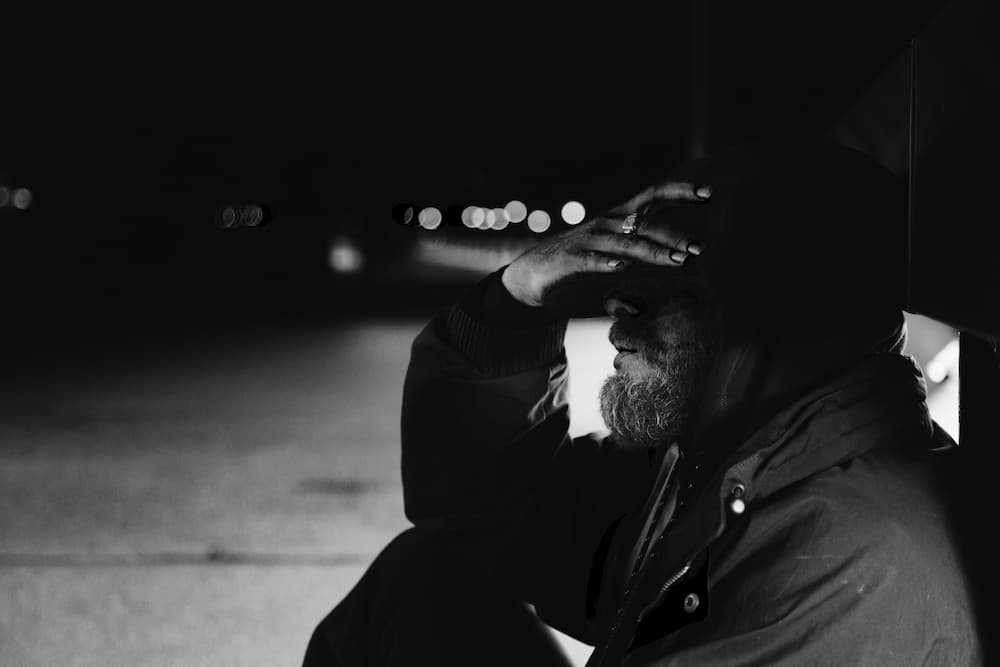
Such beliefs and their opposites are often referred to in dreams. Jung was the first to notice this pattern. He found it so pervasive that he developed his theory of dreams as compensation around this idea. Although many early theories about dreams have been successfully challenged, this one persists and is incorporated into many current theories that suggest dreams bring new information and have the potential to transform our long-held emotional beliefs based on current experience. Therefore, dream material can be a rich source of experiential information to use as a base for facilitating memory reconsolidation.
Doing what dreams do, only better
We can take a dream and by focusing on it, assist in the very processes that dreams are implicated in – those of emotional memory reconsolidation and emotional regulation. Over time, dreams appear to help take the emotional charge out of challenging memories while enabling us to retain the information we need to make more adaptive decisions in the future. Dreamwork can augment and strengthen this process. And it can kick-start a ‘failed’ dreaming process that is not working as it should, as is the case with recurrent nightmares of those suffering from posttraumatic stress disorder (PTSD).
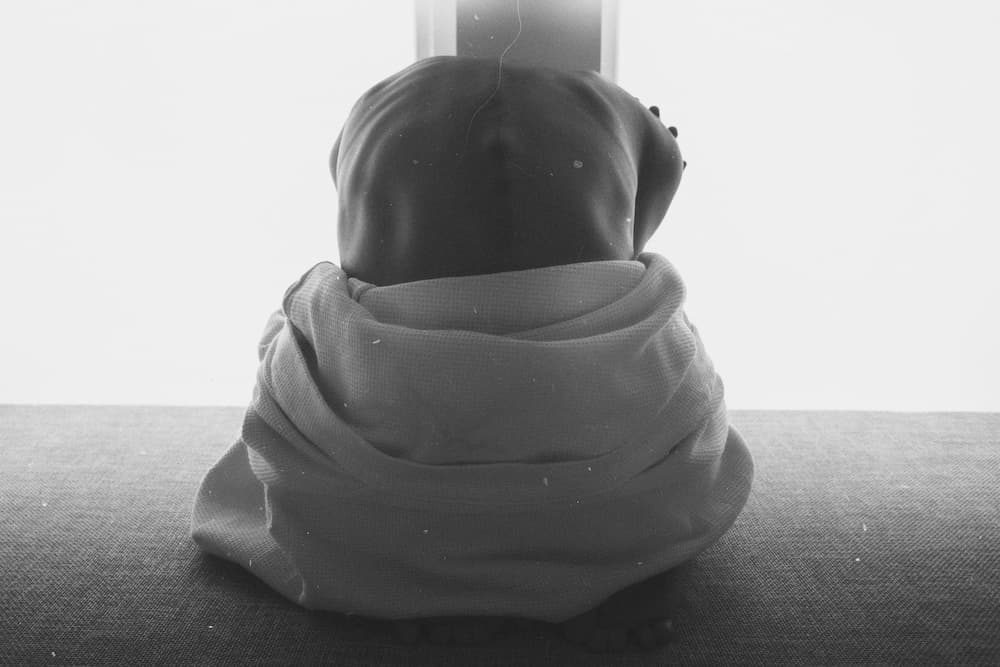
One of the challenges of trying to engender emotional memory reconsolidation is that it can take quite a bit of detective work to uncover an outdated emotional belief that was formed implicitly. Ideas about the nature of the world are often formed in childhood based on experiences from one’s family of origin, and early beliefs are rarely explicit or called into question. Having no other frame of reference as very young children, we see our environment as simply how the world works, and the beliefs we pick up are a way of adapting to the emotional and relational world we found ourselves in. Dreams, however, can bring our emotional beliefs to life as metaphorical images we experience directly. They often represent novel information that contradicts what we believe. Such images are the keys that can unlock the process of emotional memory reconsolidation, updating and transforming how we respond to life situations in light of current experience.
Already, those who consistently work with dreams as part of their practice of psychotherapy have an intuitive understanding of how to work with dreams to bring about therapeutic change. Most invite their clients into a deeply experiential sense of the dream, a critical ingredient in the process. Dreams often have within them contrary elements that can be juxtaposed.
I am suggesting that armed with a basic understanding of the role of dreaming in emotional memory consolidation, we may be able to explore the dreams that clients bring to therapy in a way that facilitates or strengthens the helpful processes that dreams are already a part of; well-considered current theories suggest that dreams are implicated in the process of reducing the emotional charge of memories that have current relevance, and also in updating our store of memories to include current experience, better preparing us for what’s next. This could also serve as a definition of what happens in psychotherapy. Not just the dreams themselves, but the dreamwork process within therapy can facilitate these emotional and memory updating processes. In addition, nightmare treatment research has shown that by using what we know about dreams in specific and thoughtful ways, we can repair sleep-dream-memory processes that are not working well, helping healthy dreaming to resume.
Clinical examples of transformational dreamwork
What I have noticed about the process of memory reconsolidation is that theories of psychotherapy incorporated its basic elements well before the neuroscience underlying the process was discovered. The trend in dreamwork toward greater experiential practices is an example of how therapists intuit and/or learn by experience to use methods that engender change. In addition, Jung’s notion that dreams are compensatory, and Gendlin’s bias control are two ways dreamwork brings about an experiential juxtaposition that can cause significant shifts in the dreamer’s store of emotional memory.
An example of memory reconsolidation at work is shown in the dreamwork with the Grateful Dead dream earlier in this book. Initially, the dreamer is terrified of being shot by ‘Jack’, the man who in waking life had been abusive and was now aware of where the dreamer worked. In the dreamwork, this fear was juxtaposed by the feelings of safety I encouraged her to sink into very deeply. There were at least two safe places in the dream to draw from: memories of her first love, and also being with a group of like-minded people on the bus who prevent Jack from harming her. In a later part of the session, I ask the dreamer to ‘be’ Jack for a minute, another form of juxtaposition; she feels how hollow and sick he is, before we move on to the part of the dream where she is safe on the bus.
There is a palpable release of tension in the course of working with the dream, and this is sustained, which is the hallmark of a successful memory reconsolidation process. The dreamer reported that prior to the dreamwork, she felt very anxious in general, and especially going to work. After the dreamwork, the fear was no longer present. She said, “I’m not holding the charge anymore.” She could walk into work without her usual worried pausing at the threshold, and this was not a conscious, but an effortless, automatic action reflective of a structural change in the nature of her fear memories. Interestingly, in her subsequent dream, she confronts Jack and he apologizes, which is further evidence of change. I believe such dream changes are significant and authentic reflections of clinical change because they happen without conscious volition. The dreamwork also shifted the way the dreamer holds the memories about Jack, with more of a focus on her friends coming to her rescue and her desire to cultivate community in her life.

The ‘new was’
In the preceding example, the client arrives at a new vantage point. From there, she views the past differently, but also, paradoxically, with a sense that it has always been that way. Gendlin (1984), called this the “new was.” He viewed feelings, thinking, actions and words all primarily as lived experience in the body, and each bodily event as implying what comes next. He called this ‘carrying forward’ and said, “In therapy we change not into something else, but into more truly ourselves. Therapeutic change is into what that person really ‘was’ all along… it is a second past, read retroactively from now. It is a new ‘was’ made from now.” From this new was, steps come that change one’s conception of the past entirely. The change is not just a current one, but a shift that ripples through our entire store of memory, revising many things accordingly.
There is room here to think about state-dependent memory, something I encounter frequently in working as a psychotherapist. To play with the above example, when the client feels afraid, the memories of Jack feel much more ominous and she recalls the worst ones. When she is less afraid, she may recall better times, such as her earlier relationship with her first love. This fear bias colors her perception of the world in general, and of relationships specifically. I believe that the elements of this dream were particularly salient and powerful tools for engendering lasting change in her sense of relational safety. It can be a challenge in psychotherapy to create deeply-felt juxtapositions necessary to revise emotional memory, but dreams provide ready-made and highly relevant material for this powerful transformation process.
ABOUT THE AUTHOR
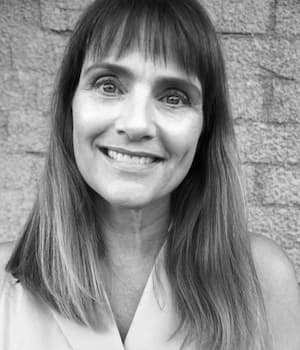 Dr. Leslie Ellis is an author, teacher, researcher, and therapist with an abiding interest in inner life. She teaches therapists how to work with embodied experience, trauma, and dreams, and offers on-line courses in dreamwork and focusing. She has a PhD in Clinical Psychology with a somatic specialization and has conducted award-winning research in treating nightmares of refugees using embodied dreamwork techniques. www.drleslieellis.com.
Dr. Leslie Ellis is an author, teacher, researcher, and therapist with an abiding interest in inner life. She teaches therapists how to work with embodied experience, trauma, and dreams, and offers on-line courses in dreamwork and focusing. She has a PhD in Clinical Psychology with a somatic specialization and has conducted award-winning research in treating nightmares of refugees using embodied dreamwork techniques. www.drleslieellis.com.
References
- Ecker, B., Ticic, R. & Hulley, L. (2012). Unlocking the emotional brain: Eliminating symptoms at their roots using memory reconsolidation. New York: Routledge.
- Ellis, L. (2019). A Clinician’s Guide to Dream Therapy: Implementing Simple and Effective Dreamwork. New York & London: Routledge.
- Gendlin, E. T. (1984). The client’s client: The edge of awareness. In R. L. Levant & J. M. Shlien (Eds.), Client-centered therapy and the person-centered approach. New directions in theory, research and practice, pp. 76-107. New York: Praeger.
- Lane, R. D., Ryan, L., Nadel, L., & Greenberg, L. (2015). Memory reconsolidation, emotional arousal, and the process of change in psychotherapy. Behavioral and Brain Sciences, 38.
- Lee, J. L., Everitt, B. J., & Thomas, K. L. (2004). Independent cellular processes for hippocampal memory consolidation and reconsolidation. Science, 304, 839-843.
- Pesant, N. & Zadra, A. (2004). Working with dreams in therapy: What do we know and what should we do? Clinical Psychology Review, 24, 489–512.
Fare Well
May you and all beings be happy, loving, and wise.
Greetings
The Wise Brain Bulletin offers skillful means from brain science and contemplative practice – to nurture your brain for the benefit of yourself and everyone you touch.
The Bulletin is offered freely, and you are welcome to share it with others. Past issues are posted at http://www.wisebrain.org/tools/wise-brain-bulletin.
Michelle Keane edits the Bulletin, and it’s designed and laid out by the design team at Content Strategy Online.
To subscribe, go to http://www.wisebrain.org/tools/wise-brain-bulletin.
The Wellspring Institute
For Neuroscience and Contemplative Wisdom
The Institute is a 501c3 non-profit corporation, and it publishes the Wise Brain Bulletin. The Wellspring Institute gathers, organizes, and freely offers information and methods – supported by brain science and the contemplative disciplines – for greater happiness, love, effectiveness, and wisdom. For more information about the Institute, please go to http://www.wisebrain.org/wellspring-institute.
If you enjoy receiving the Wise Brain Bulletin, please consider making a tax-deductible donation to the Wellspring Institute. Simply visit WiseBrain.org and click on the Donate button. We thank you.
Perspectives on Self-Care
Be careful with all self-help methods (including those presented in this Bulletin), which are no substitute for working with a licensed healthcare practitioner. People vary, and what works for someone else may not be a good fit for you. When you try something, start slowly and carefully, and stop immediately if it feels bad or makes things worse.

